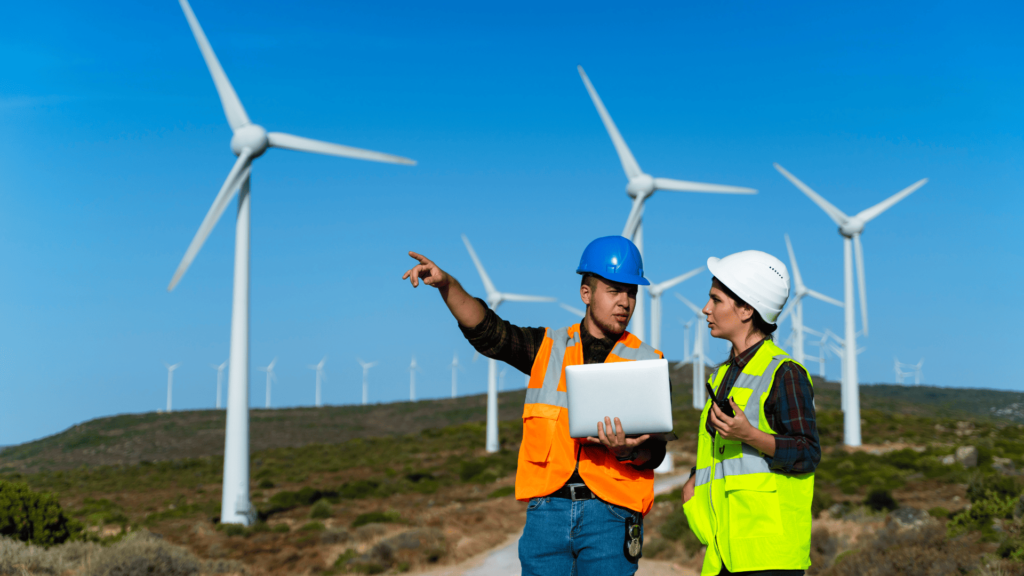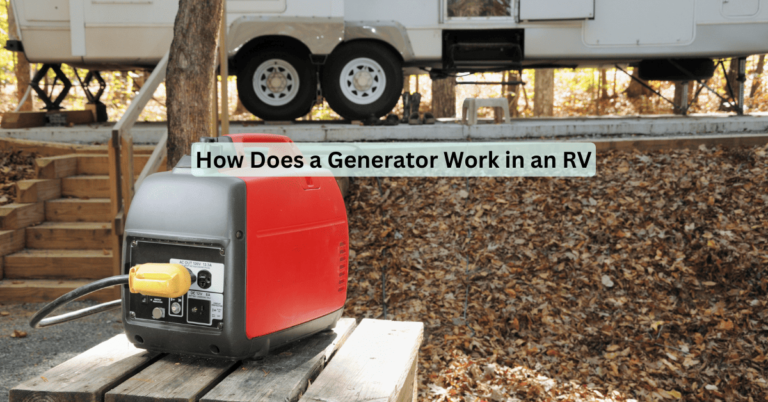Understanding How Do Generators Work in Wind Turbines

Wind turbines have become a ubiquitous sight on the landscape, harnessing the power of wind to generate electricity. At the heart of these towering structures lies a crucial component: the generator. Understanding how generators work within wind turbines is essential to grasp the mechanics behind renewable energy production. In this article, we delve into the workings of a generator in a wind turbine, exploring its components, principles, and contribution to sustainable energy generation.
How Do Generators Work in Wind Turbines: A Detailed Explanation
Wind turbines are marvels of engineering that harness the kinetic energy of the wind and convert it into usable electricity. At the core of these towering structures lies the generator, a crucial component responsible for transforming mechanical energy into electrical power. To understand how generators work in wind turbines, let's delve into the intricate process step by step.
1. Capturing Wind Energy
It all begins with the turbine blades, which are strategically designed to capture the kinetic energy of the wind. As the wind flows over the blades, it applies a force that causes them to rotate. This rotational motion is the first step in the conversion process, as it sets the turbine's mechanical components into action.
2. Connecting to the Rotor
The rotating blades are connected to a central shaft, often referred to as the rotor shaft. This shaft extends into the body of the wind turbine, where it interfaces with the generator. The rotation of the rotor shaft is what ultimately drives the generator's operation.
3. Understanding Electromagnetic Induction
At the heart of generator operation lies the principle of electromagnetic induction. Discovered by Michael Faraday in the 19th century, electromagnetic induction describes how a changing magnetic field induces an electric current in a conductor. This phenomenon forms the basis of how generators in wind turbines produce electricity.
4. Components of the Generator
The generator in a wind turbine consists of two primary components: the rotor and the stator. The rotor is the rotating part of the generator, connected to the rotor shaft and positioned within a housing. It typically contains magnets or electromagnets arranged to create a magnetic field.
Conversely, the stator is the stationary part of the generator, surrounding the rotor. It contains coils of copper wire, known as stator windings, arranged in a specific configuration. The stator windings are essential for generating electricity through electromagnetic induction.
5. Generating Electricity
As the rotor spins within the generator, it creates a changing magnetic field due to the movement of the magnets or electromagnets. This changing magnetic field induces an electric current in the stator windings through electromagnetic induction. The induced current flows through the conductive material of the stator windings, generating electricity in the form of alternating current (AC).
6. Converting and Transmitting Electricity
The alternating current produced by the generator is then transmitted through electrical wiring within the wind turbine tower. From there, it may be converted into direct current (DC) by power electronics, such as rectifiers or inverters, depending on the specific requirements of the electrical grid or the end-user.
Once converted, the electricity can be transmitted over long distances through power lines to homes, businesses, and industries, providing a reliable and renewable source of power.
Conclusion
In summary, generators in wind turbines operate on the principle of electromagnetic induction to convert the kinetic energy of the wind into electrical power. By harnessing the rotational motion of the turbine blades, these generators play a crucial role in producing clean and sustainable electricity. Through ongoing advancements in technology and engineering, wind turbines continue to emerge as essential components of the global renewable energy infrastructure, contributing to a greener and more sustainable future.
The Basics of Wind Turbines

- Introduction to wind turbines and their role in renewable energy.
- Overview of the main components: blades, rotor, tower, and generator.
- Focus on the generator as the core component responsible for electricity generation.
Components of a Generator
- Stator: The stationary part of the generator that houses the copper wire coils.
- Rotor: The rotating component, usually mounted on the turbine's shaft, consisting of magnets or electromagnets.
- Bearings: Mechanisms that facilitate smooth rotation between the rotor and the rest of the turbine.
Principle of Electromagnetic Induction
- Explanation of electromagnetic induction as the underlying principle behind generator operation.
- When the rotor spins, it creates a changing magnetic field, inducing an electric current in the stator coils.
- The induced current flows through the conductive material, generating electricity.
Synchronous vs. Asynchronous Generators
- Different types of generators used in wind turbines.
- Synchronous generators: Maintain synchronization with the grid frequency, providing stable output.
- Asynchronous generators: Also known as induction generators, they do not require synchronization but may need additional control mechanisms.
Control Systems and Power Electronics
- Importance of control systems in optimizing turbine performance.
- Power electronics regulate the voltage and frequency of the generated electricity.
- Inverter systems convert the variable frequency AC output into grid-compatible electricity.
Maximizing Efficiency and Output
- Factors influencing the efficiency of generator operation.
- Blade design and orientation affect the amount of wind energy captured.
- Variable speed control systems optimize generator performance under varying wind conditions.
Maintenance and Reliability
- Importance of regular maintenance to ensure uninterrupted operation.
- Inspection of bearings, lubrication systems, and electrical components.
- Predictive maintenance techniques to anticipate and prevent potential failures.
Integration into the Grid
- Challenges and considerations in integrating wind power into the existing electrical grid.
- Grid stability and the need for balancing supply and demand.
- Advancements in grid technology to accommodate variable renewable energy sources.
Environmental Impact
- Comparison of wind power with conventional fossil fuel-based energy generation.
- Reduced greenhouse gas emissions and environmental benefits.
- Potential environmental concerns such as noise pollution and wildlife impacts.
Future Trends and Innovations
- Emerging technologies in wind turbine design and generator technology.
- Development of offshore wind farms for increased energy production.
- Integration of energy storage solutions to mitigate intermittency issues.
In all, The generator is a fundamental component of a wind turbine, converting the kinetic energy of the wind into electrical power. Through the principles of electromagnetic induction, generators play a pivotal role in harnessing renewable energy and reducing dependence on fossil fuels. Understanding the workings of generators in wind turbines is essential for advancing sustainable energy solutions and combating climate change. As technology continues to evolve, innovations in generator design and turbine efficiency promise a brighter, cleaner energy future.
FAQs: How Do Generators Work in Wind Turbines
How does a generator work in a wind turbine?
Generators in wind turbines operate on the principle of electromagnetic induction. As the wind spins the turbine blades, they turn the rotor connected to the generator. Inside the generator, the rotor's movement creates a changing magnetic field, inducing an electric current in the stationary coils of the stator. This current is then converted into usable electricity.
What are the main components of a generator in a wind turbine?
The main components include the rotor, stator, and bearings. The rotor, mounted on the turbine's shaft, contains magnets or electromagnets. The stator is the stationary part housing copper wire coils. Bearings facilitate smooth rotation between the rotor and the rest of the turbine.
How does electromagnetic induction drive generator operation?
Electromagnetic induction is the process by which a changing magnetic field induces an electric current in a conductor. In wind turbines, the rotor's rotation creates a changing magnetic field, inducing a current in the stator coils. This induced current is the basis for generating electricity.
What types of generators are used in wind turbines?
Two main types are synchronous and asynchronous (induction) generators. Synchronous generators maintain synchronization with the grid frequency. Asynchronous generators, also known as induction generators, do not require synchronization but may need additional control mechanisms.
How do generators contribute to wind turbine efficiency?
Generators facilitate the conversion of wind energy into electricity, contributing to overall turbine efficiency. Through the efficient utilization of electromagnetic induction, generators maximize the conversion of kinetic energy from the wind into usable electrical power, thereby optimizing turbine performance.
What maintenance is required for generators in wind turbines?
Regular maintenance is essential to ensure the continued operation and reliability of generators. This includes inspections of bearings, lubrication systems, and electrical components. Predictive maintenance techniques may also be employed to anticipate and prevent potential failures, maximizing uptime and efficiency.
How are generators integrated into the electrical grid?
Generators in wind turbines are integrated into the electrical grid through power electronics and control systems. These systems regulate the voltage and frequency of the generated electricity, ensuring compatibility with the grid. Inverter systems may also be employed to convert the variable frequency AC output into grid-compatible electricity.
What are the environmental benefits of using generators in wind turbines?
Wind turbines and their generators offer significant environmental benefits, including reduced greenhouse gas emissions and air pollution compared to fossil fuel-based energy generation. By harnessing wind energy, generators contribute to mitigating climate change and promoting sustainability.
What future trends and innovations are expected in wind turbine generators?
Future trends may include advancements in generator technology to improve efficiency and performance, as well as the development of offshore wind farms for increased energy production. Integration of energy storage solutions and smart grid technologies may also enhance the reliability and flexibility of wind turbine generators.


